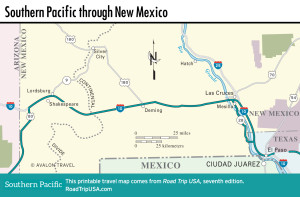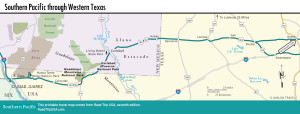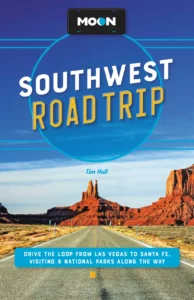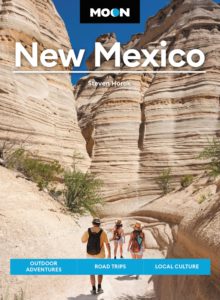Roswell: UFO Central
North of Carlsbad, 70 mi or so (121 km), the New Mexico ranching town of Roswell (pop. 47,635) has become a catch-word for flying saucers, UFOs, extraterrestrials, and a complicated U.S. government cover-up of all the above. The cover-up is the one thing that’s pretty much a given, since the Air Force has gone so far as to deny officially that anything ever happened in Roswell—which is equivalent to a confession, in the minds of UFO believers. Everything else about Roswell is, so to speak, up in the air.
The Roswell story goes something like this: In 1947, at the start of Cold War hysteria, something strange and metallic crashed into a field outside town, and the Army Air Corps (teams of tight-lipped operatives wearing special suits and dark glasses, no doubt) came and recovered it. Reports to the effect that a flying saucer had landed in Roswell appeared in the local paper, and then quickly spread around the globe, only to be denied by the government, which claimed the “flying saucers” were actually weather balloons.
Thirty-three years later, a retired military intelligence officer from the Roswell base sold a story to the National Enquirer, repeating details of the 1947 “flying saucer” crash and telling of his subsequent capture of extraterrestrial beings. This in turn spawned countless other stories, books, and videos, and spurred the growth of a battery of tourist attractions and souvenir stores in and around Roswell. To learn more, stop at the International UFO Museum and Research Center (114 N. Main St., 575/625-9495, $5), which fills an old movie theater in downtown Roswell. Several blocks north is the only UFO-themed McDonald’s in the world.
Maps of the Southern Pacific Route through New Mexico and Texas

















